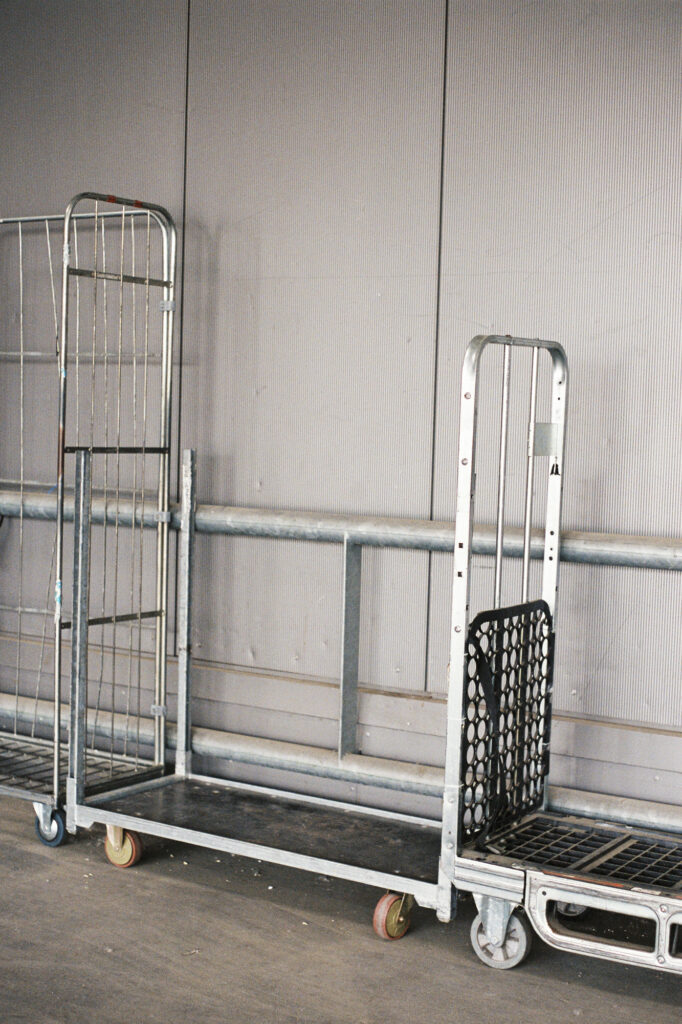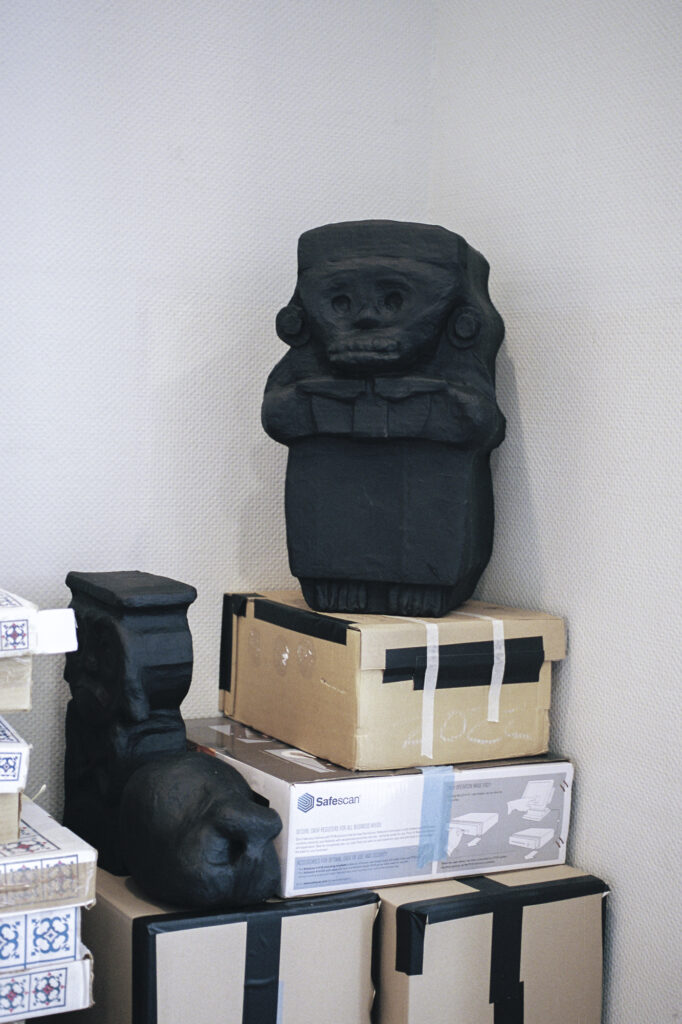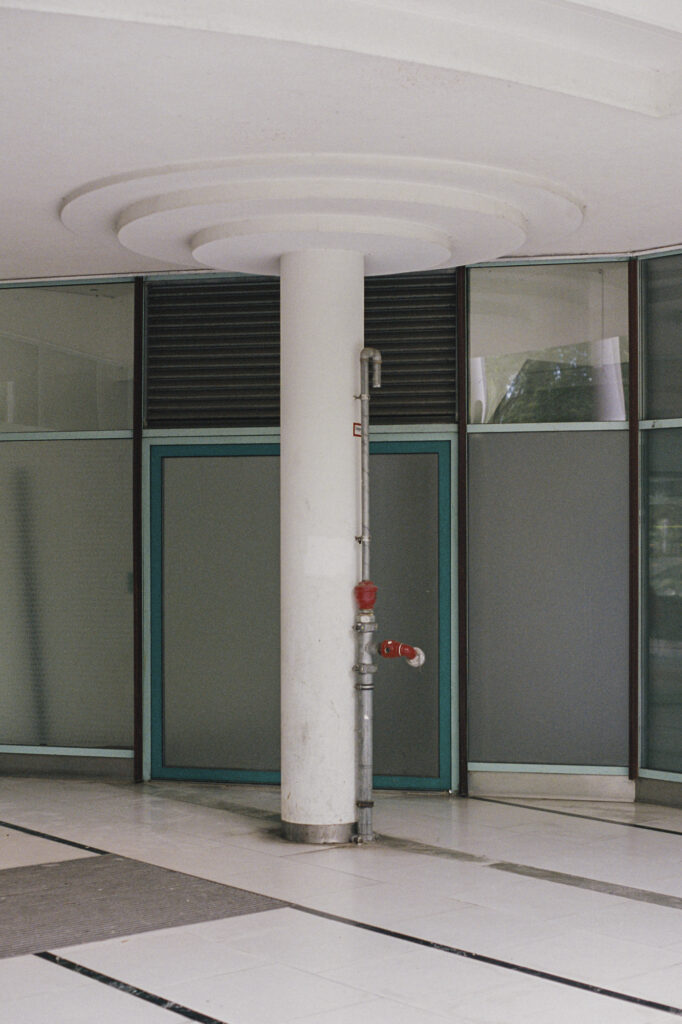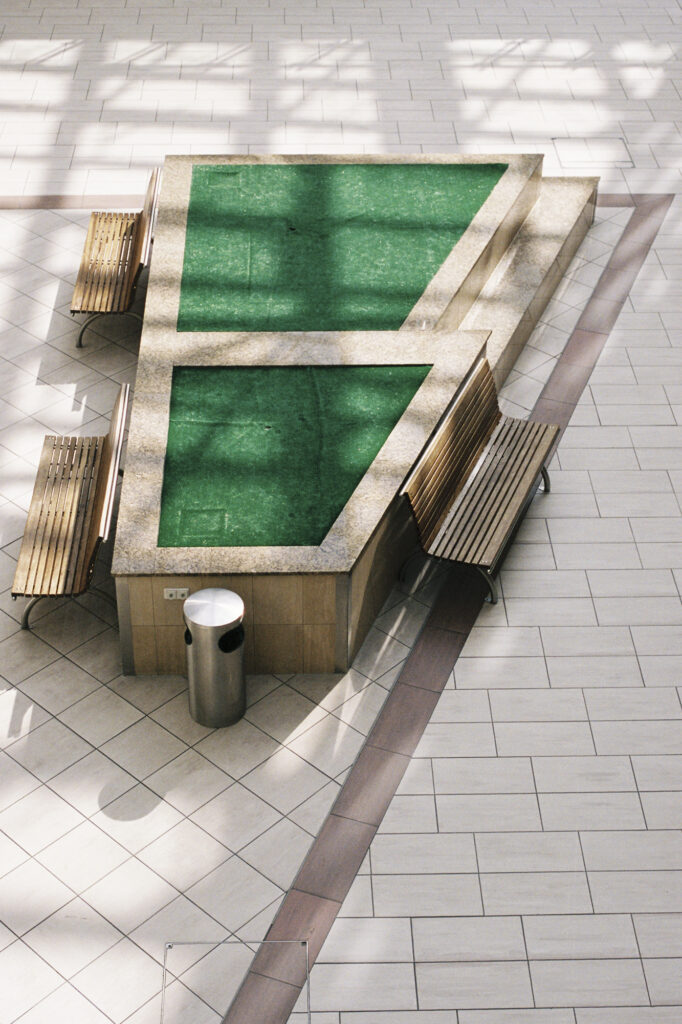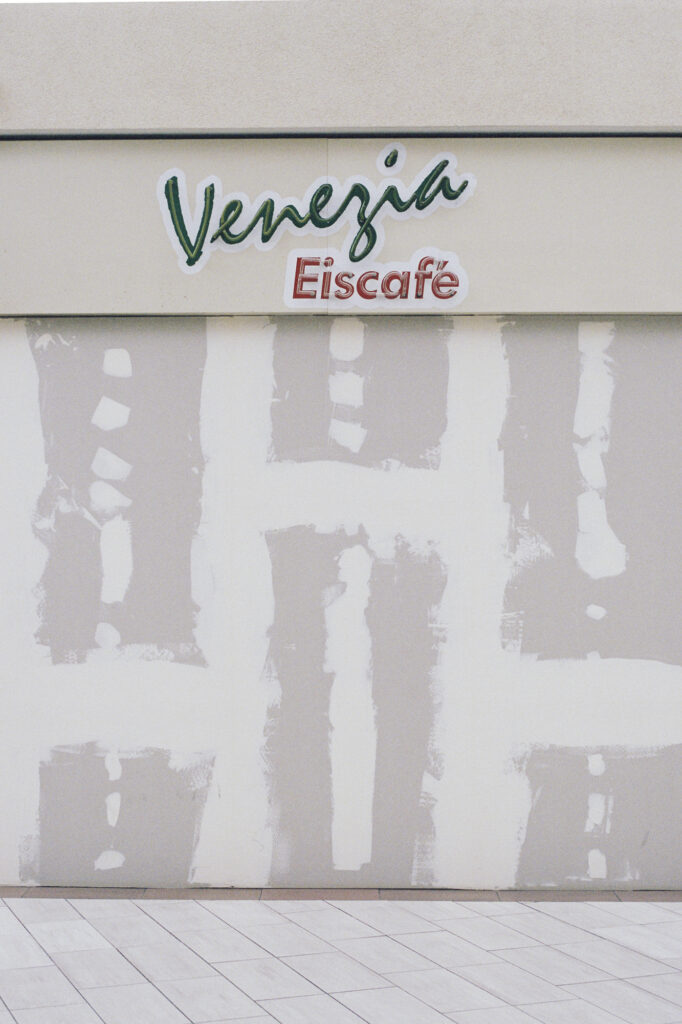Passage
German
Berlin verzeichnet deutschlandweit die höchste Dichte an Warenkaufhäusern pro Einwohner:in. Knapp 70 Stück wurden in der Hauptstadt im Laufe der letzten Jahrzehnte errichtet. Neben der Konsum fokussierten Nutzung der Center sind die großzügigen Flächen der Gebäude längst zu soziokulturellen Orten der Begegnung geworden. Das Innere der Center ist oft Überbleibsel aus einer anderen Zeit und informeller Treffpunkt unterschiedlichster gesellschaftlicher Gruppen.
Aufgrund globalisierter und digitalisierter Handelsstrukturen, verliert das Einkaufszentrum als Ort des Konsums zunehmend seine Relevanz. Während sich der Einzelhandel aus den Gebäuden zurückzieht und die Besucher:innenströme abnehmen, fantasieren Immobilienentwickler:innen über urbane Transformationskonzepte für die Kaufhäuser der Zukunft. Doch was bleibt, wenn das konsumorientierte Konzept des Einkaufscenters nicht mehr funktioniert?
von Esther Ahr
instagram: @antonia.leicht
email: antonia.leicht@web.de
English
Berlin has the highest density of shopping centers per inhabitant in Germany. Almost 70 of them have been built in the capital over the last few decades. In addition to the consumer-focused use of the centers, the spacious areas of the buildings have also become socio-cultural places of encounter. The interior of the centers is often a remnant from another era and an informal meeting place for a wide variety of social groups.
Due to globalized and digitalized retail structures, the shopping center is increasingly losing its relevance as a place of consumption. While retailers are withdrawing from the buildings and the flow of visitors is decreasing, real estate developers are fantasizing about urban transformation concepts for the department stores of the future. But what remains when the consumption-oriented concept of the shopping center no longer works?
sensored collective
Proudly powered by WordPress


